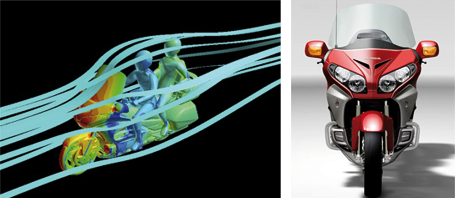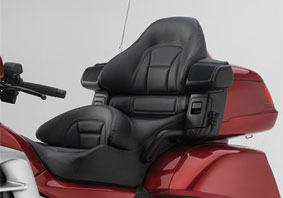
Engine
The engine is quiet and has a low center of gravity. Keeping in mind comfort and ease of handling to satisfy customers around the world, Honda followed up with our environmentally responsible horizontally opposed, six-cylinder, 1,800 cc engine, looking towards the next generation even while realizing smooth and quality riding up to the high rpm regions and emphasizing low- and mid-range torque.
For environmental performance, by adopting a three-way catalytic converter system;HECS3, along with PGM-FI to increase purification efficiency using fine air-fuel ratio control and an air injection system to encourage oxidation reactions for unburned gas, we have realized emissions purification performance, reducing levels of carbon monoxide (CO), hydrocarbons (HC) and nitrogen oxide (NOX) in exhaust emissions.
Thanks to these features, we have achieved half the level or less of the 2008 emissions regulations prescribed by the California Air Resource Board (CARB) in the US (Tier 2), and ha






